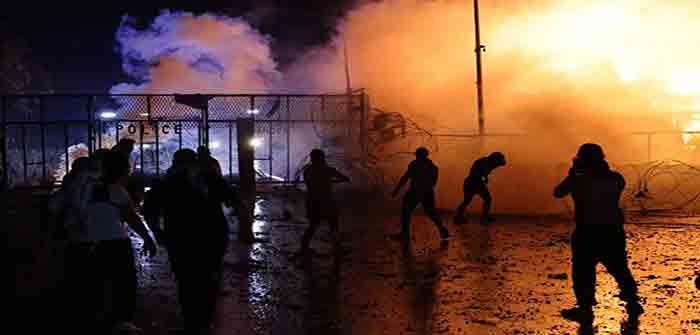
This article is part of Hamas’ War on Israel.
“… Promise was that I
Should Israel from Philistian yoke deliver;
Ask for this great deliverer now, and find him
Eyeless in Gaza …”
—John Milton, Samson Agonistes
It will be a while before we’re able to piece together a more complete picture of how Israel, despite its vaunted intelligence-gathering capabilities, was blindsided by the massive Hamas terrorist onslaught on Oct. 7, which led to the biggest slaughter of Jews since the Holocaust. After the current Israeli operation in Gaza concludes, there will be inquiries, official and unofficial, in Israel and beyond, about what contributed to this intelligence failure. Where was Israel blinded, and how?
A key focal point for these inquiries will be Lebanon. Immediately following the Oct. 7 massacre, The Wall Street Journal reported, citing Hamas and Hezbollah sources, that the terrorist attack was planned by the Iranians and Hezbollah in Lebanon, where the Iranians had set up a joint operations room, the existence of which Hezbollah media had previously disclosed in 2021. The New York Times corroborated the Journal’s story a few days later, adding that training for the attack, including on paragliders which were used to slaughter Israelis and tourists at a music festival, also took place in Lebanon.
So how did Israel find itself blind and deaf in Lebanon? Why was it that, with all this activity taking place in Lebanon over several months, Israel was not able to pick up meaningful intelligence on a lethal adversary? To answer these questions, we must turn to the current security environment in Lebanon, which in turn shaped and constrained Israel’s intelligence gathering capabilities.
Since Israel’s last major war in Lebanon in 2006, the tiny county has come under American sponsorship, even as it remained under Iranian suzerainty via its local regent, Hezbollah. This U.S.-Iranian condominium, solidified during Barack Obama’s two terms in office, is being topped off by the construction of a brand-new, $1 billion U.S. Embassy in Beirut—a symbol of the U.S.’s commitment to underwriting the country’s existing Hezbollah-led order.
America’s most significant commitments to Iranian-dominated Lebanon involve underwriting the Lebanese security sector, especially its two largest organs: the Lebanese Armed Forces (LAF) and the Internal Security Forces (ISF). The U.S. provides arms, training and equipment to these forces. Over the past year, American taxpayer dollars have also underwritten their salaries.
Right from the outset,…
